- Joined
- Dec 15, 2011
- Messages
- 11,271
- Reaction score
- 7,591
It leaves a much more uniform finish on iron cladding. Produces a pretty nice edge as well.
Lookin pretty tight. Nice even finish.

It leaves a much more uniform finish on iron cladding. Produces a pretty nice edge as well.
I would personally call it a dark contrasty finish, but don't trust my opinions too much.Xoom, so king 800 produces a dark contrasty finish? Labor of love gives me crap cause I don't polish any of my bevels, but if I can get a dark finish i may have to pick one up (king800)
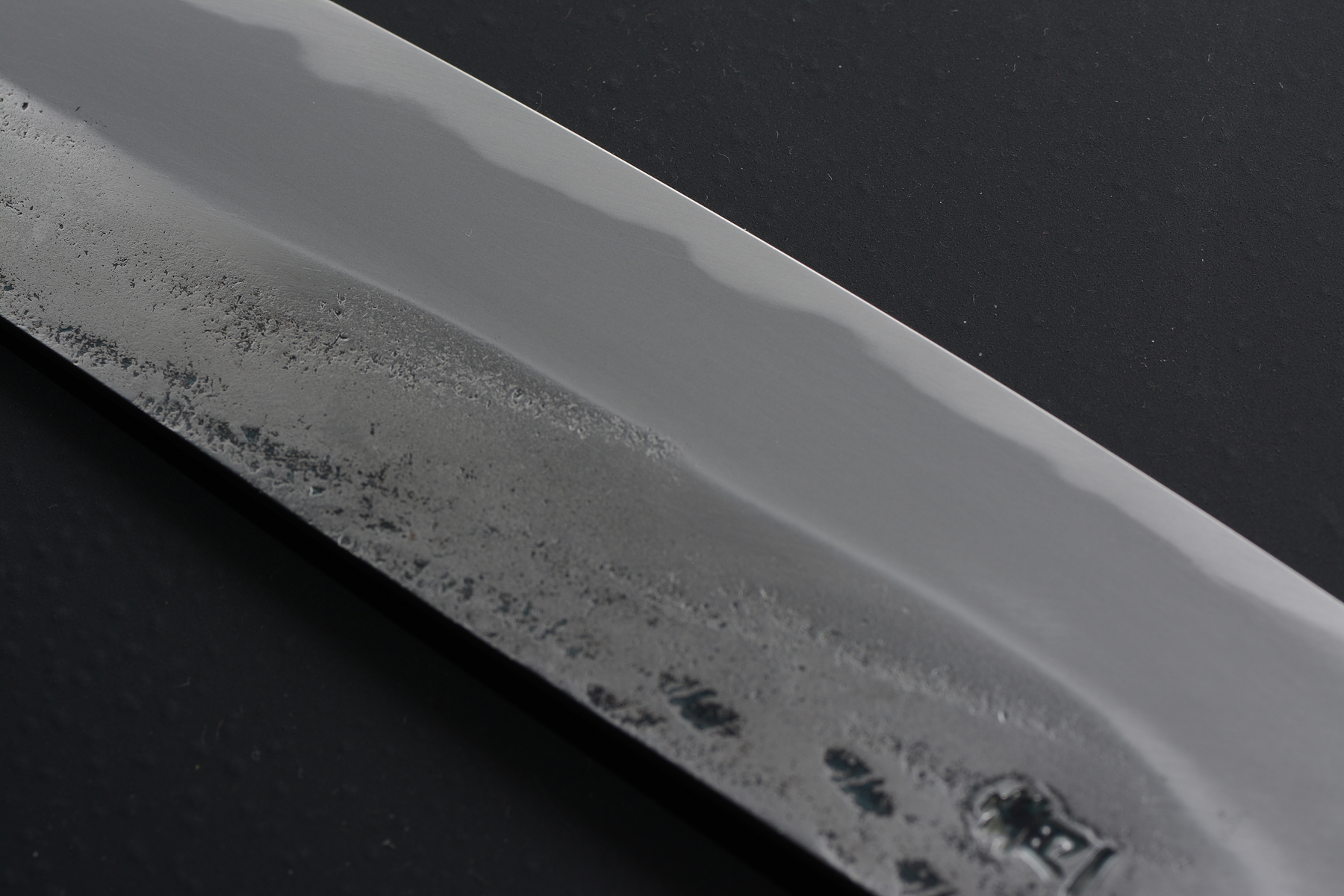
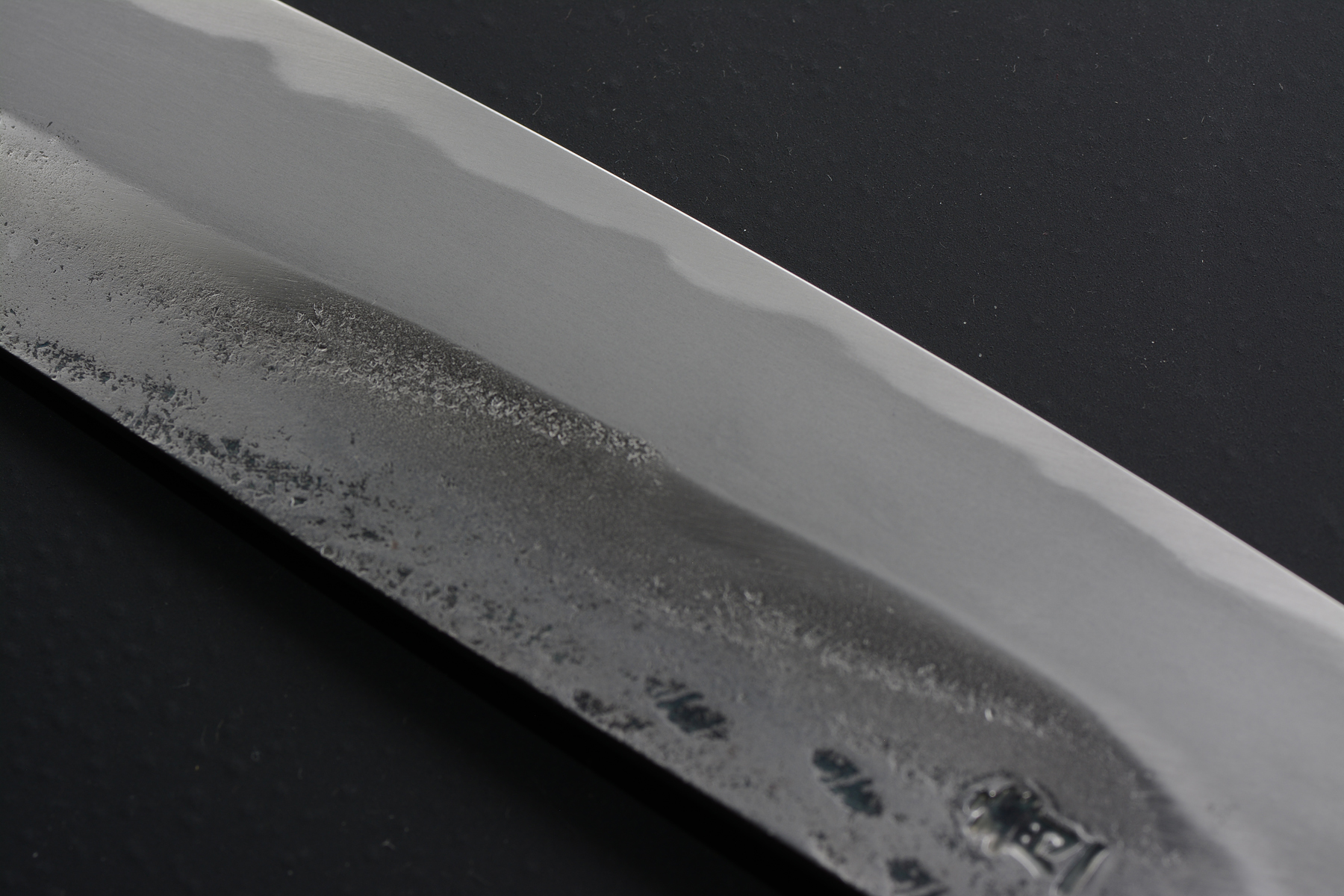
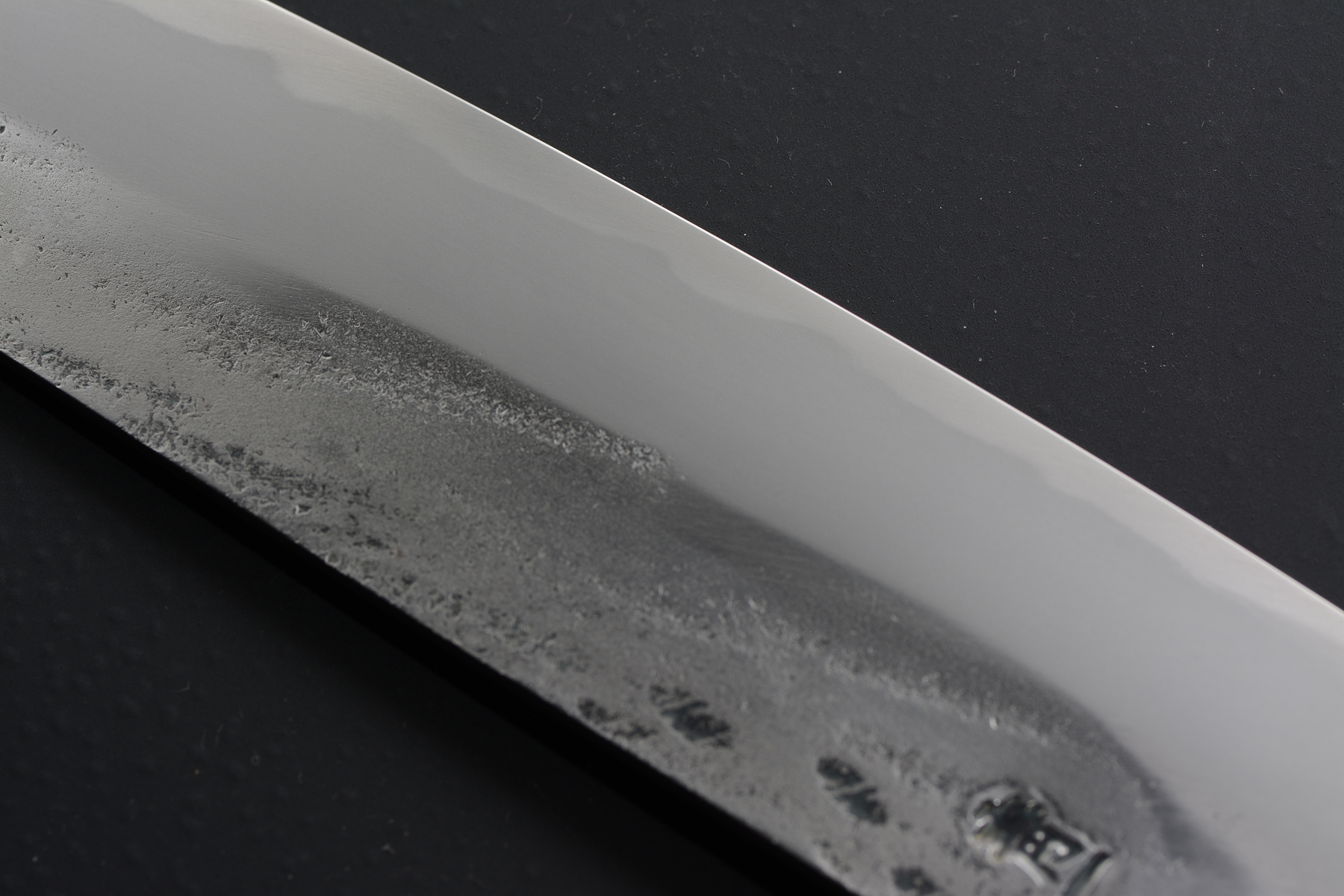
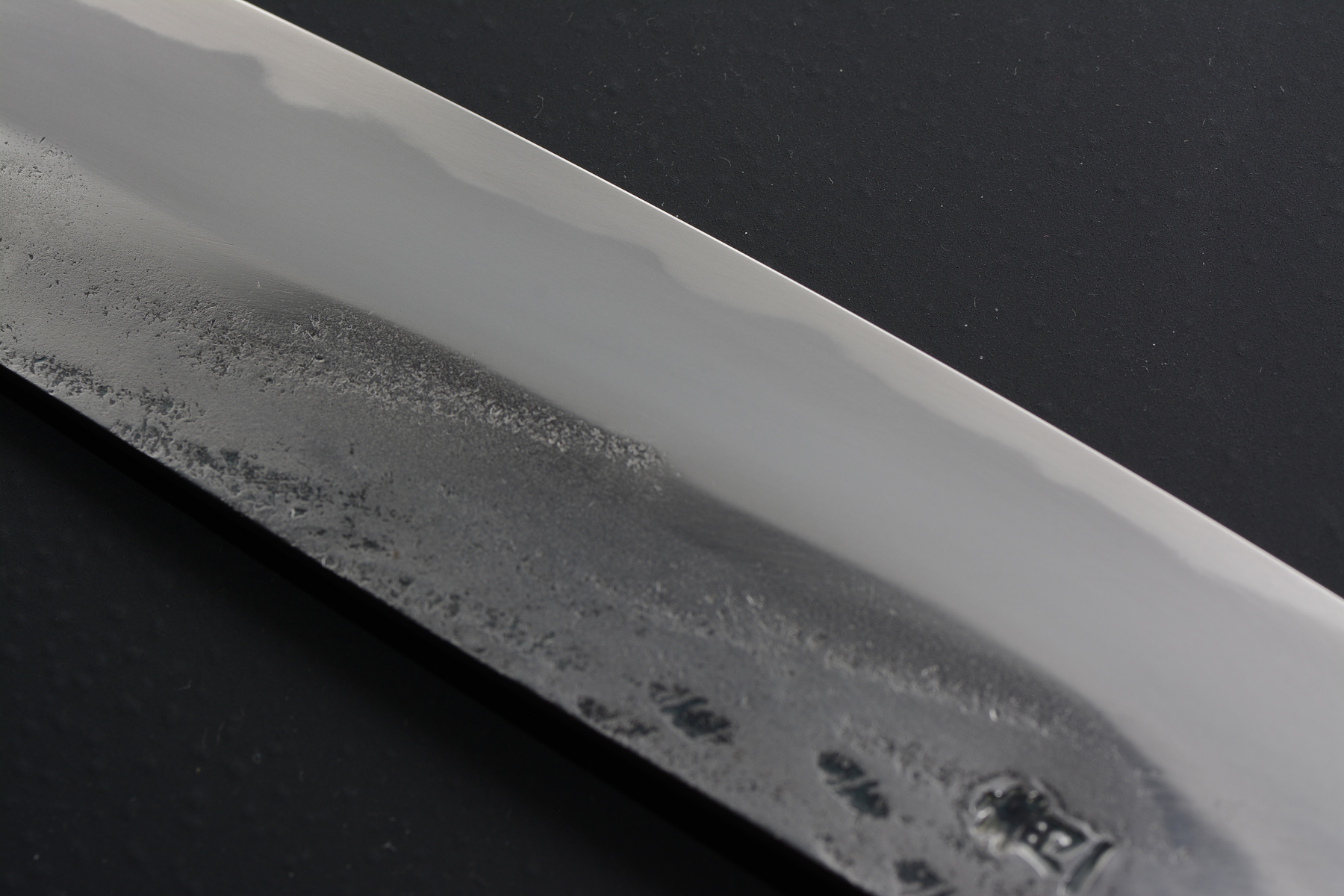
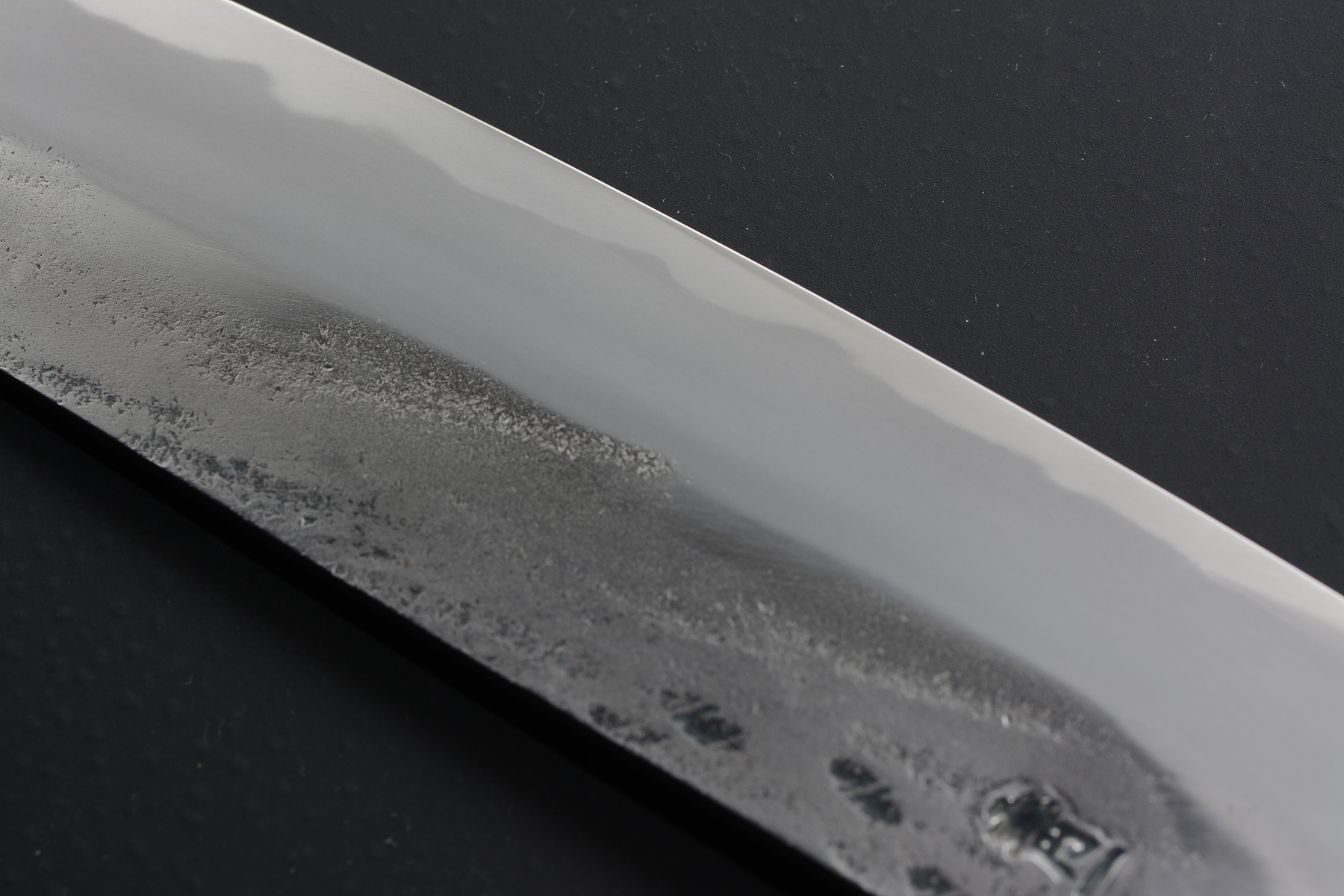
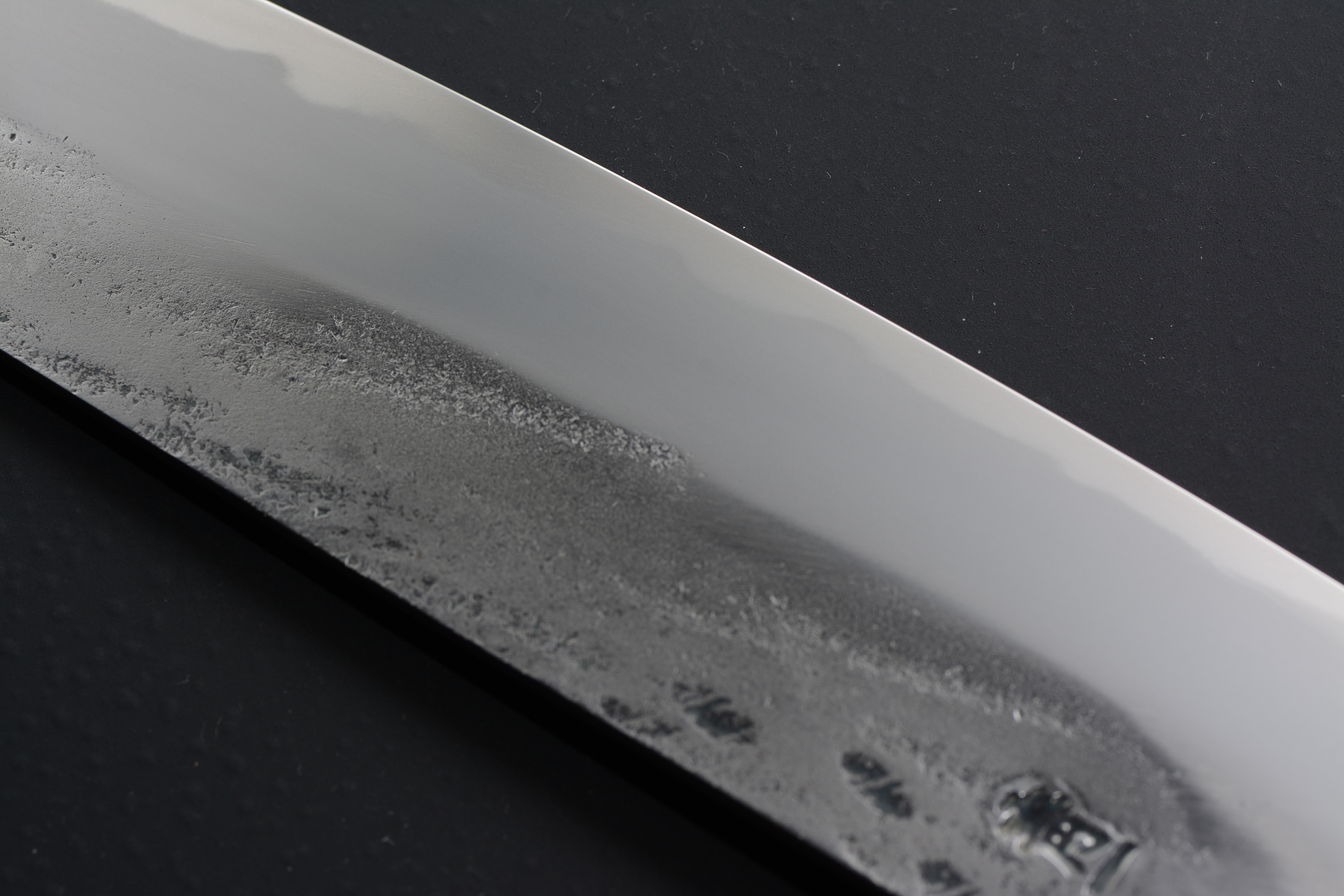
I would personally call it a dark contrasty finish, but don't trust my opinions too much.
I decided to just do a really quick and dirty lineup to give a reasonable impression of the finish contrasts of a few stones, but my lighting was a bit too gentle so it did not highlight all the details, and I didn't even maintain good focus or wipe dust. Bah. Even so, maybe some of these pics will demonstrate.
Note: these are not thoroughly worked finishes and are done in sequence, so obviously there is a big midgrit (post-800) gap and there will be stray scratches peeking out in certain light, which I failed to capture effectively
Sorry I didn't include a bunch more rocks, but hopefully someone finds some of this useful.
As for finishes and cutting...a convex bevel (not full height) used for harder ingredients like potatoes, carrots, and the like is best served by a semi-mirror finish. I think for spongy mushrooms, such a finish may be less ideal than a coarser one, though I think a linear scratch pattern like a belt finish with a quick buff across the peaks may be better than an etched/blasted finish or a random-scratch coarse kasumi. For full-height finishes or very flat, thin bevels, I am still uncertain what I like, but the benefits of a glossy mirror polish are undermined when the bevel faces form a more acute (less separation) angle, and when the edge is thicker.
Hopefully I am not arrogating to myself unqualified authority.
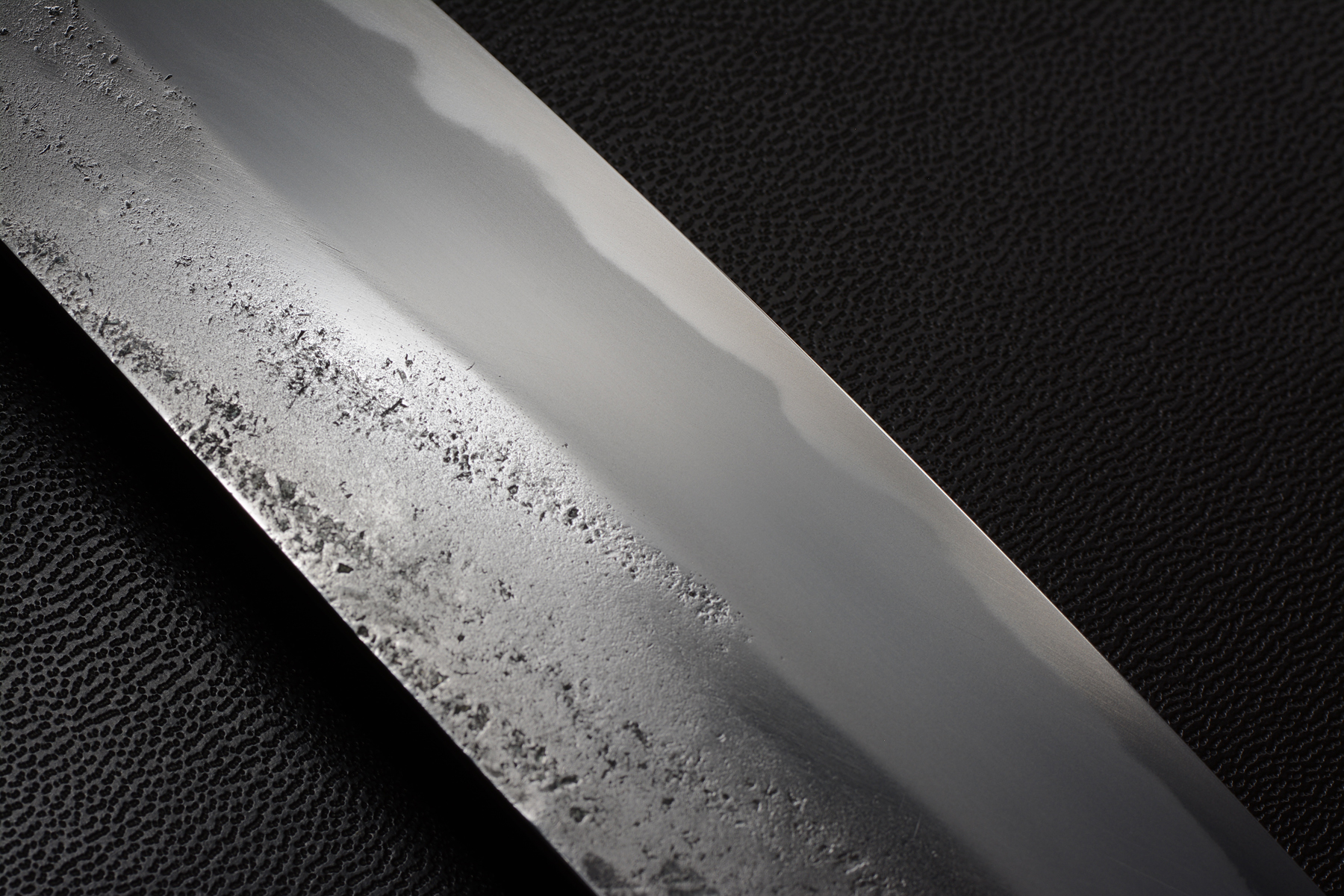
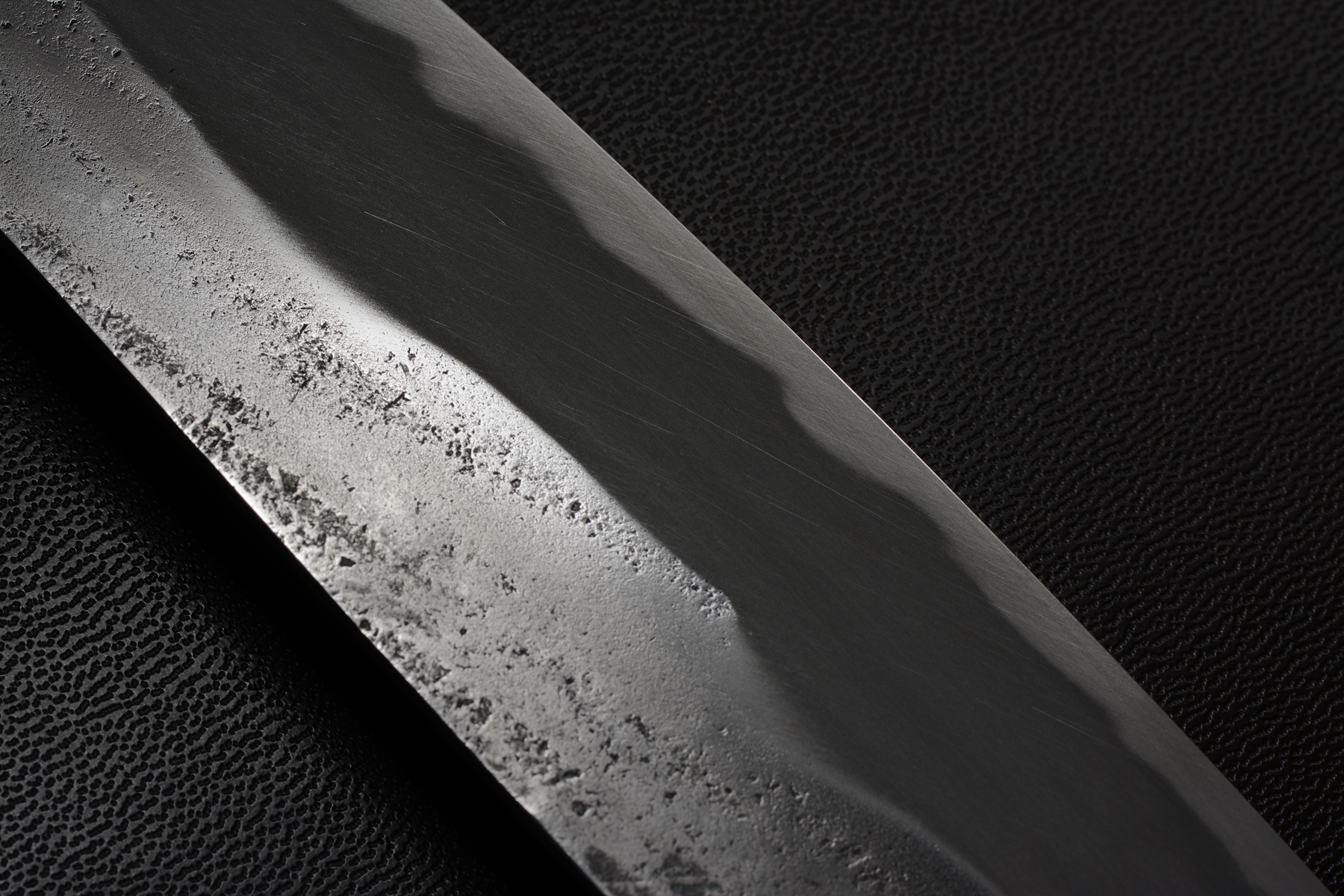
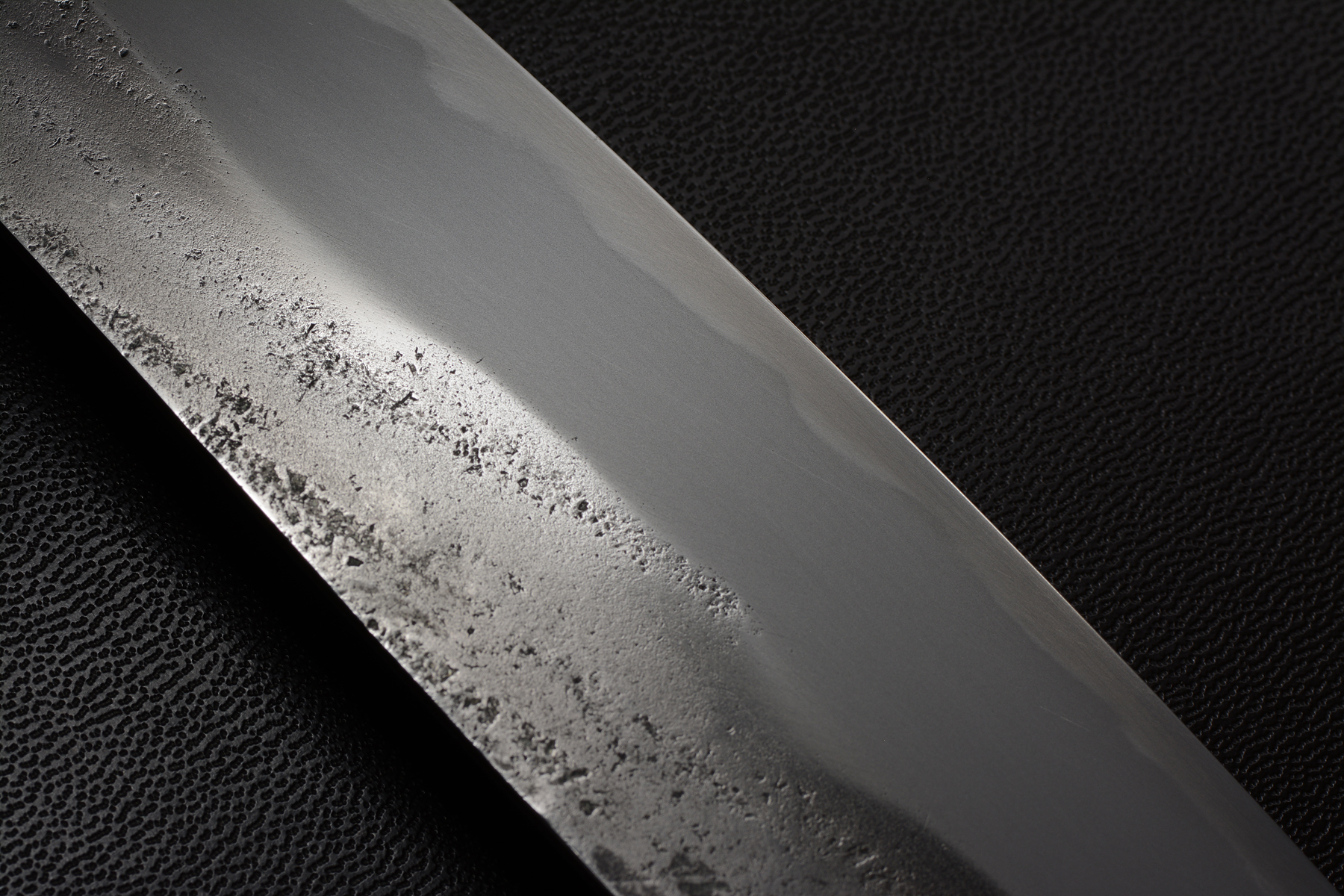
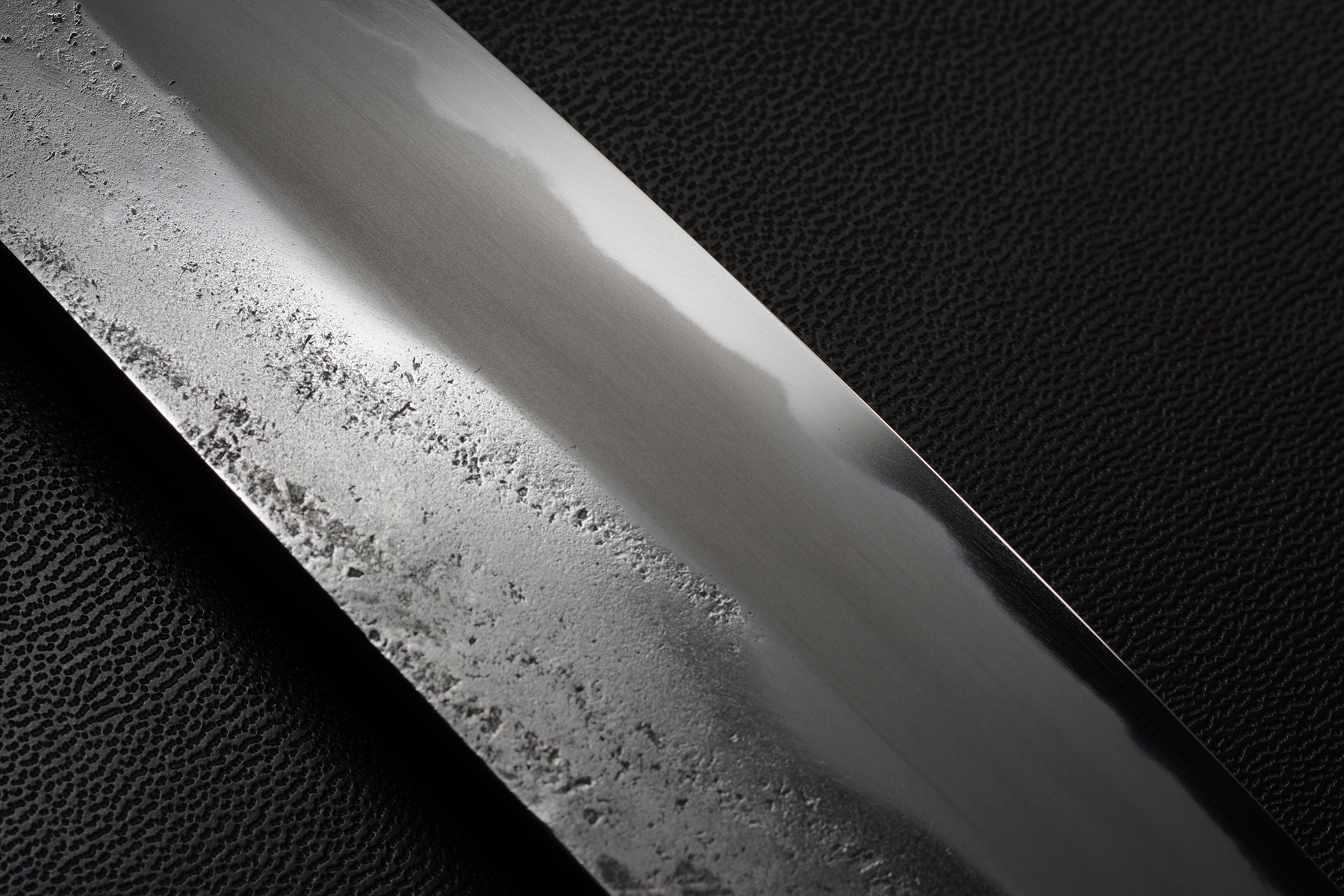
Fantastic post!!! Extremely informative and with beautiful example. Thanks for this great contribution! :goodpost:
@XooMG looks fantastic
Thanks for the kind words. I get nervous posting even these admittedly rushed examples.Big thanks to xoomg for breathing life into this thread.
I think it's a worthwhile discussion. I recall at one time thinking the JNS 800 would provide me all the polishing I need for practical cutters, and then disliking the cutting feel in a bunch of stuff. I would like to try some more linear coarse finishes with a bit of burnishing, to see how they behave.ditto, thanks for addressing the performance aspect not just the looks. people seem to completely ignore that part which is the only function i care about.
Thanks. I will probably take some slurry from uchigumori, white suita, or hakka, and try to do a wipe down on the last finish I posted, to see if it can smooth the cladding finish a little. Synthetic abrasives will do the trick, but may also undo the core steel polish. What do you use midgrit slurry after?@XooMG
Very cool! thats the reason why we are here) !
Also i love linear scratch patterns with Medium Grain Jnat slurry polishing (with a microfiber cloth and lots of preasure).. Works good on 210mm+ Gyutos.
Thanks for sharing those nice pictures, seeya, daniel!
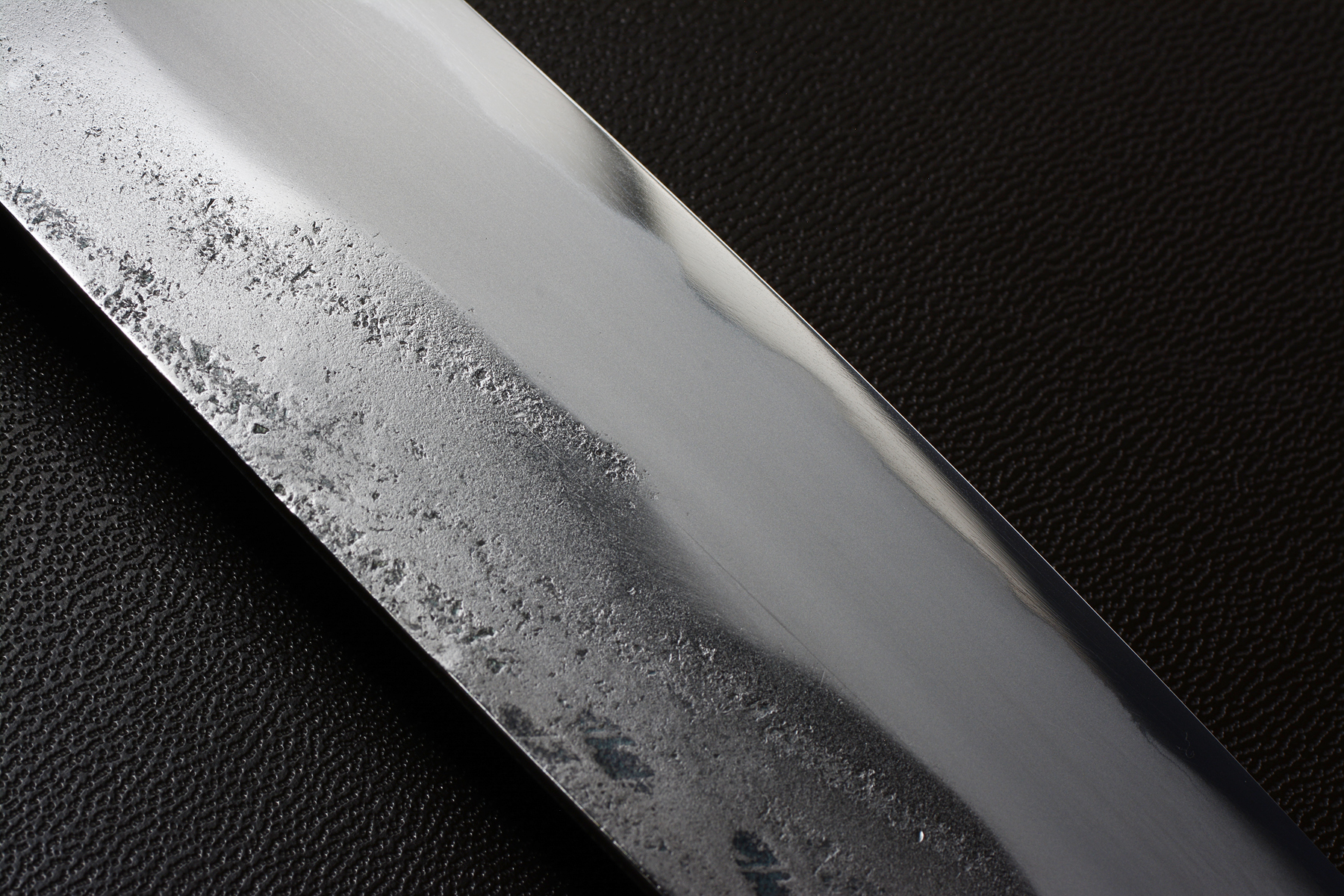
XooMG - thanks for all your posts. Great work, descriptions & photos. I need a lot more experience and I may attempt some of that polishing.
Those pics look great. I should really try to squeeze in a binsui finish sometime. In fact, I may take my knife back to binsui to clean up some of the coarse scratches...hmm...Aoto slurry on glazed over white Thai Binsui (really worked down mud). Overcast day flatters this a bit, smooths out the scratches XD
Can't comment on progression this time around since the knife was actually at a higher grit finish before this...
Wide bevel is sharpened without convexing (beta-togi?)
Cladding is smooth to touch; finish is neither super dark like it seems the King 800 gives, nor a more muted white-ish like some of my higher grit stones make it
Very small scratches visible on the cladding, slightly more visible scratch pattern on the core steel. Core steel is a (subjectively) pretty foggy/hazy mirror (reflection of finger on edge looks as if behind a thick fog)
Edge (need to use it more) feels fairly crisp and a bit grabby.
https://drive.google.com/file/d/1YMwd9dBQ6cha8J-XVQNUxiByI1PZzflhPA/view?usp=sharing
https://drive.google.com/file/d/1-EUzJMXQ93SSklj_H4T9xGVk8GUfViwdGA/view?usp=sharing
https://drive.google.com/file/d/1ul8IkLHUNTkIUixGWxvhghqcEcwUoskedw/view?usp=sharing
https://drive.google.com/file/d/1ZfkZnV_ccQUSgjsdjd60w3aXDbwVj6DIXQ/view?usp=sharing
Aoto slurry on glazed over white Thai Binsui (really worked down mud). Overcast day flatters this a bit, smooths out the scratches XD
Can't comment on progression this time around since the knife was actually at a higher grit finish before this...
Wide bevel is sharpened without convexing (beta-togi?)
Cladding is smooth to touch; finish is neither super dark like it seems the King 800 gives, nor a more muted white-ish like some of my higher grit stones make it
Very small scratches visible on the cladding, slightly more visible scratch pattern on the core steel. Core steel is a (subjectively) pretty foggy/hazy mirror (reflection of finger on edge looks as if behind a thick fog)
Edge (need to use it more) feels fairly crisp and a bit grabby.
https://drive.google.com/file/d/1YMwd9dBQ6cha8J-XVQNUxiByI1PZzflhPA/view?usp=sharing
https://drive.google.com/file/d/1-EUzJMXQ93SSklj_H4T9xGVk8GUfViwdGA/view?usp=sharing
https://drive.google.com/file/d/1ul8IkLHUNTkIUixGWxvhghqcEcwUoskedw/view?usp=sharing
https://drive.google.com/file/d/1ZfkZnV_ccQUSgjsdjd60w3aXDbwVj6DIXQ/view?usp=sharing
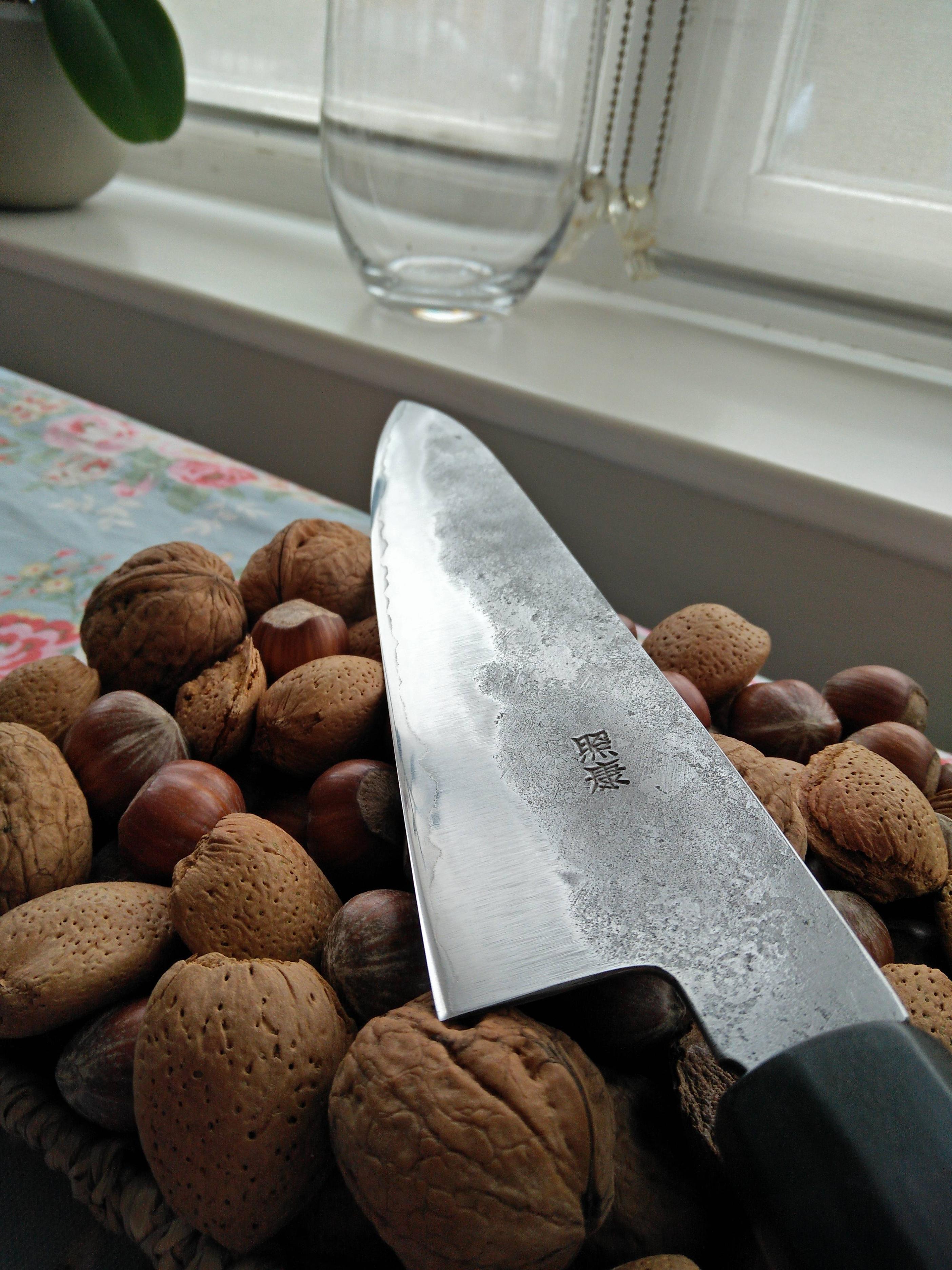
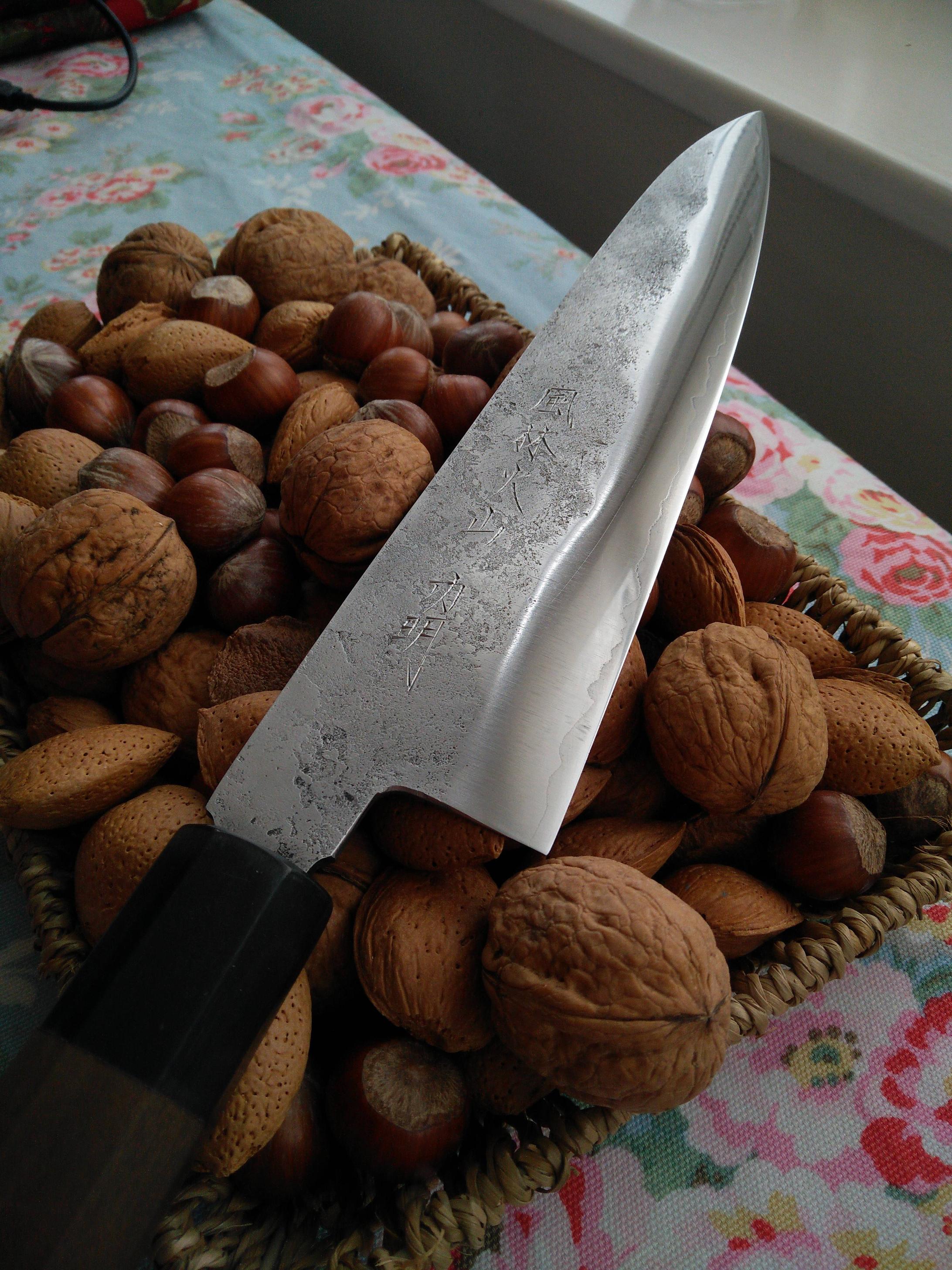
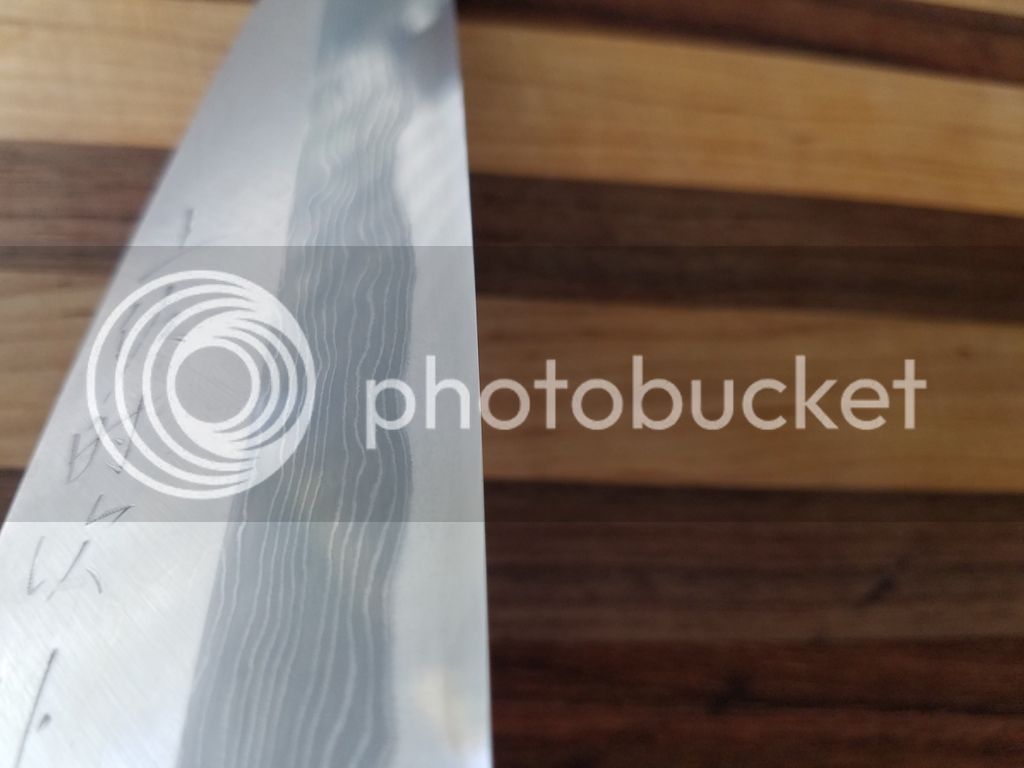
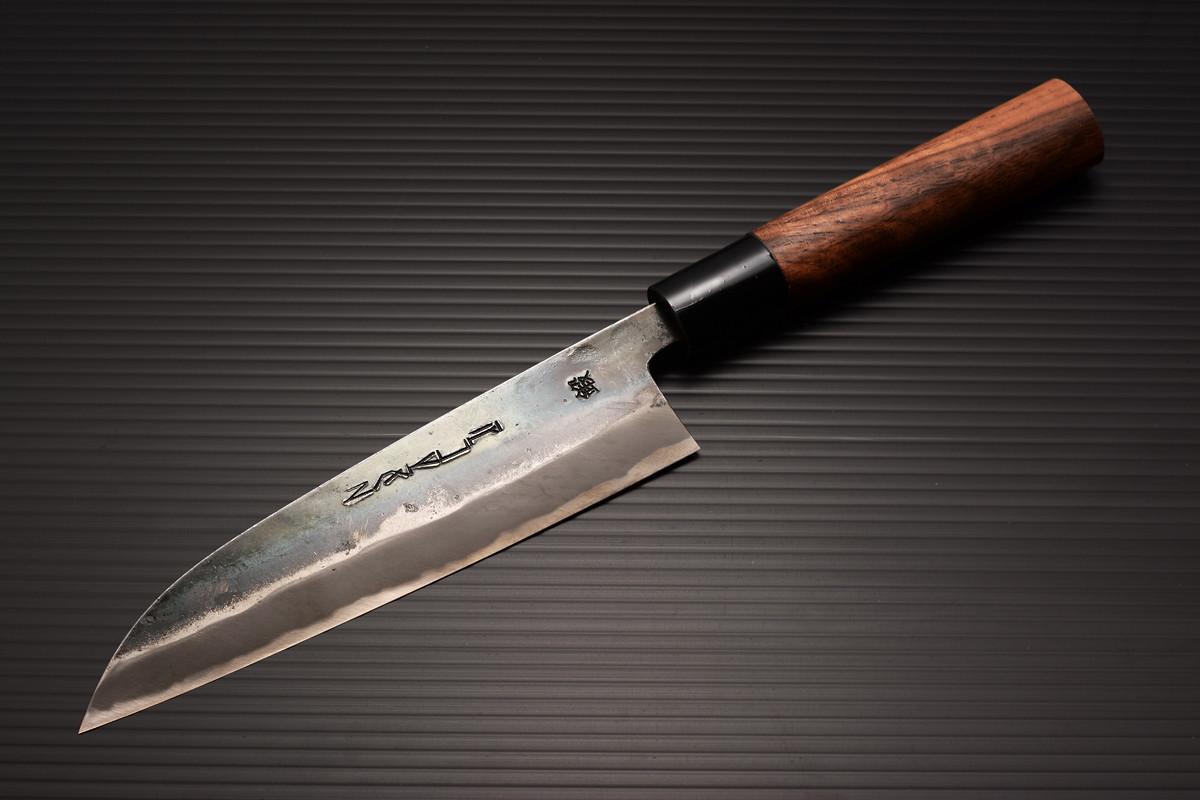
(sorry old pic)
@dwalker Thank's. What did you use before the 8k and Suita? Sorry if this was already mentioned
Enter your email address to join: